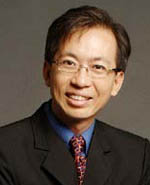 |
|
 |
From LIFE WITHOUT LIMITS, the free monthly opt- in newsletter. Subscribe Now!![]()
Aug 2002 Issue
Self Identity and Self Leadership
The morning of May 19th, 2002 was not much different than any other with the exception that I woke in a wind-shredded tent and was a bit woozy from the lack of oxygen at 7400m. It was 230am. The place was Cho Oyu's northwest ridge and this was our final campsite before going for the 8200m high summit. Temperatures were fairly mild at - 20 degrees below zero, but sleeping the night before without the aid of bottled oxygen meant rather cold extremities and a sluggish outlook.
The route took a punishingly direct route through a 30-metre vertical rock band and then a steep ice gully. We used what fixed line there was pre-placed on the route by teams who had been ahead of us. On easier ground, we stayed unroped, moving at our own speed. By 1030am, I waved to my sole companion, MB Tamang. Exhausted by the preceding sustained technical difficulties, I decided it was safer to descend. We were about 300 metres from the summit with perhaps just two hours to go over much easier terrain. Both of us reached our basecamp safely a day later.
.............................
WHEN discussing self-identity and self leadership, I often use examples of climbers turning around ( for whatever reason ). In some cases, where exhaustion is not a factor but other issues like bad weather prevail, a climber has to make a decision not to go for the top even if he/she is in good shape.
Feeling comfortable with the decision to turn back requires a great deal of self leadership; especially in Himalayan peaks where a lot of climbing does not require you to be constantly roped together with your partner. Here, you may be moving as a team; but wrapped up in thick clothing and with a howling wind, you are often deep in your own thoughts. Ultimately, any individual has to take control of his own destiny without significant input from other parties. Being confident in your own abilities, experience and having the right tools helps one to make such decisions.
Second, turning away from the summit means going home without the perceived " prize" - the summit. For some expeditions, this may mean facing failure, disappointment from sponsors and so on. Knowing your ego and educating it to be happy with the RIGHT decisions is the key to being happy with such unpleasant and unfulfilling decisions. Too many of us go through life with our identity dictated to us by our parents, bosses, peers or perhaps our own community. Many public personalities are unable to find the ballast of self-identity, relying on their own PR to let them know how they are doing. Depression, anxiety and inner restlessness is a possible result.
Non-attachment to the objective is a key tool in this issue. This does not mean we should not be focused or be lax in toiling for our goals. What it does means is that our happiness is not wholly dependent on reaching that goal. And sometimes, turning back brings us closer to the true goal than going on. Going on can mean losing fingers and toes to frostbite or death. No real mountaineer ever went to climb solely for the summit.
This spring, I went to climb two of the world's highest peaks back-to-back without the help of bottled oxygen or the support of a large team. I came back with the summit of a delightful 6000m peak, came close to both of the big objectives, great memories of companionship on the mountain and with all my fingers and toes.
This is not a bad thing.

Corporate Motivator, Trainer
| Email queries for David Lim's presentations to |
|||